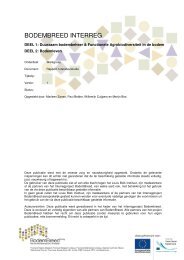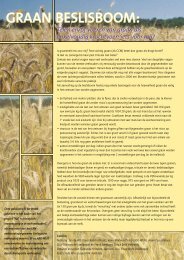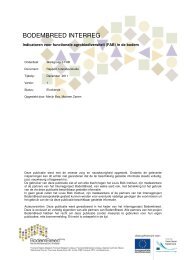Respiratory System Disorders and Therapy From a New - Louis Bolk ...
Respiratory System Disorders and Therapy From a New - Louis Bolk ...
Respiratory System Disorders and Therapy From a New - Louis Bolk ...
Create successful ePaper yourself
Turn your PDF publications into a flip-book with our unique Google optimized e-Paper software.
already observed in fever. This also occurs with hormones that boost the metabolism, such<br />
as adrenaline <strong>and</strong> thyroxin.<br />
The human organism has a circadian rhythm of approximately 24 hours. The sun dictates<br />
this circadian rhythm. Whenever we create a rhythm in life that does not adhere to day <strong>and</strong><br />
night, changes occur in our circadian rhythm. Human beings, as self-conscious creatures,<br />
can remove themselves from the imperative physiology of the 24-hour rhythm, by for<br />
example, having night duty. In chapter 3.3.2., we discussed jetlag as another example.<br />
In short, to form a true-to-life picture of the human organism, we must think in terms of<br />
continually changing compositions of substances <strong>and</strong> processes that function rhythmically.<br />
Each still image or image of a dynamic in one direction, not followed by a counter-movement,<br />
is an image of disease. The stone in the gall bladder or the kidney, the fat deposits in the<br />
arteries, the uric acid crystals in gout, everything that no longer flows can make us ill.<br />
The reverse is also true: everything that dissolves too strongly <strong>and</strong> remains in flow without<br />
ever changing its dynamic makes us ill as well: the maceration of lung tissue in certain types<br />
of tuberculosis, the formation of pus in an abscess, hydrocephaly caused by unrestrained<br />
production of cerebral fluid, profuse bleeding during menstruation or clotting disorders, <strong>and</strong><br />
an on-going dissolving of bone in osteoporosis. Every one-sidedness, in which the rhythm<br />
is lost, is pathology. The relation to previous chapters is clear here, in particular where we<br />
stated that health is a state of homeostasis with a dynamically oscillating equilibrium, acute<br />
disease is a temporary dysbalance of the equilibrium, <strong>and</strong> in chronic disease the dysbalance<br />
persists <strong>and</strong> the balance setpoint is reset (section 3.3.3.).<br />
The healthy organism is in homeostasis. The healthy balance is maintained by the rhythm<br />
of manifold related polar processes that oscillate around a midpoint.<br />
7.4. Rhythm in <strong>Therapy</strong>: Conclusion<br />
We have attempted to show the significance of a process that occurs outside of its ‘healthy<br />
rhythm’ in dimension, location, <strong>and</strong> time (Chapter 5), using the phenomena in asthma<br />
<strong>and</strong> pneumonia. Whether it is to one direction or another, a one-sided dynamic leads to

















